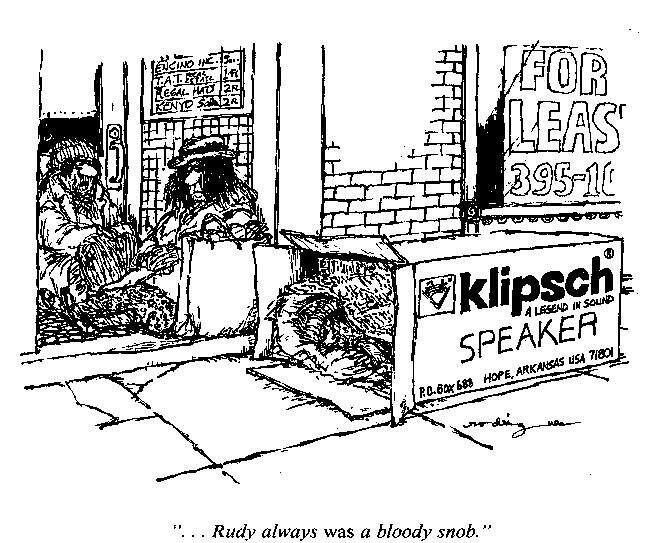Back to the XVX for a moment and that 92dB/4Ω rating: if we ‘correct’ that figure to 8Ω, for purposes of comparison with other speakers, the sensitivity actually drops to 89dB. Now, let’s be clear: Wilson have done nothing wrong; they’ve presented a sensitivity figure, with both the measurement limits and the rated and minimum impedance. That’s enough information for the informed reader to understand the potential implications of those numbers. This speaker ain’t particularly efficient and it definitely ain’t an easy load! But it’s easy to see how the uninformed might miss that, especially given the efficiency uber-alles chorus echoing from the wings. What’s worrying is the echo effect of that chorus in the writing of commentators who should know better.
 Now, look at another example: Peak Consult’s Dragon Legacy. It’s big and it’s complex, with five drivers in a three-way D’Appolito array. Its quoted efficiency is 90dB (1W/1m) and its nominal impedance is 4Ω. Look at the numbers and it would be easy to assume that this speaker is a pig to drive. Yet listen to the Dragon Legacy and it quickly becomes apparent that its response to input, its micro-dynamic and textural definition as well as its overall dynamic range and immediacy are actually its sonic and musical strengths. In other words, all those things the high-efficiency brigade claim as their own. Yes, it likes Watts, but it doesn’t demand amplifiers with massive power supplies and limitless load tolerance, capable of driving a car up a hill. So, what gives? Two things: I suspect the efficiency figure in this case is more informed and actually conservative; the crossover also uses impedance compensation, thus presenting the amplifier with a flat, non-reactive load. This is one example where the end result sounds much more like a high-sensitivity speaker system than the numbers suggest.
Now, look at another example: Peak Consult’s Dragon Legacy. It’s big and it’s complex, with five drivers in a three-way D’Appolito array. Its quoted efficiency is 90dB (1W/1m) and its nominal impedance is 4Ω. Look at the numbers and it would be easy to assume that this speaker is a pig to drive. Yet listen to the Dragon Legacy and it quickly becomes apparent that its response to input, its micro-dynamic and textural definition as well as its overall dynamic range and immediacy are actually its sonic and musical strengths. In other words, all those things the high-efficiency brigade claim as their own. Yes, it likes Watts, but it doesn’t demand amplifiers with massive power supplies and limitless load tolerance, capable of driving a car up a hill. So, what gives? Two things: I suspect the efficiency figure in this case is more informed and actually conservative; the crossover also uses impedance compensation, thus presenting the amplifier with a flat, non-reactive load. This is one example where the end result sounds much more like a high-sensitivity speaker system than the numbers suggest.
What do I mean by an “informed” sensitivity rating? I’m much more interested in a wider bandwidth, averaged result than a single frequency measurement. I’m also more interested in the in-room response than the anechoic output, although such measurements are inherently less useful for comparison. But then I’m sceptical about such direct comparison anyway. I’m much more interested in what the numbers can tell me about that speaker in a specific system context, because I’m far more interested in system solutions than individual products. In-room measurement also serves to ‘equalise’ results for different speaker/output topologies, such as boxes, dipoles and horns, where conventional measured results are so often at odds with the listening experience.
I have long been a fan of easier speaker loads. That often (but not always) means higher-sensitivity models and, in some cases, really high sensitivity designs. But a decent level of sensitivity, real or claimed, does not necessarily a great speaker make. Nor does it override amplifier matching considerations – and that is the really crucial point. In many ways, the most important thing about making a speaker more sensitive is that it makes the amplifier’s job easier – but only if the increased sensitivity is matched by a benign load impedance. Likewise, a more sensitive speaker allows the use of a smaller amp – but only if the amp’s power supply is up to the job of matching the speaker and signal’s dynamic demands.

